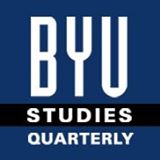BYU Studies

Keywords
Mormon studies, polygamy, Utah, St. George, polygyny
Abstract
This is a short summary of three papers in this issue of BYU Studies Quarterly offering new insights into the importance of polygyny, or polygamy, in nineteenth-century Mormondom. The Bitton-Lambson article derives theoretical limits on the sustainability of polygyny, suggesting that, given the parameters observed in nineteenth-century Utah, a prevalence exceeding 15 to 20 percent of males and 25 to 30 percent of females is implausible. Bennion's paper provides detailed information on how prevalent polygyny was in St. George and in its wide hinterland. It also includes a number of personal stories to shed light on who the settlers were, what motivated their move to Utah's Dixie, and how their marital status fit into the makeup of the population. Daynes's article compares the prevalence in St. George and Manti with sustainable levels over time. The picture painted by this trilogy is one of a thriving plural marriage system that approached the limits of what was mathematically possible. The authors invite further research on this topic and outline their hopes for the direction of that research.
Recommended Citation
Daynes, Kathryn M.; Bennion, Lowel C.; Bitton, Davis; and Lambson, Val
(2012)
"Plural Marriage in St. George: A Summary and an Invitation,"
BYU Studies: Vol. 51:
Iss.
4, Article 6.
Available at:
https://scholarsarchive.byu.edu/byusq/vol51/iss4/6
